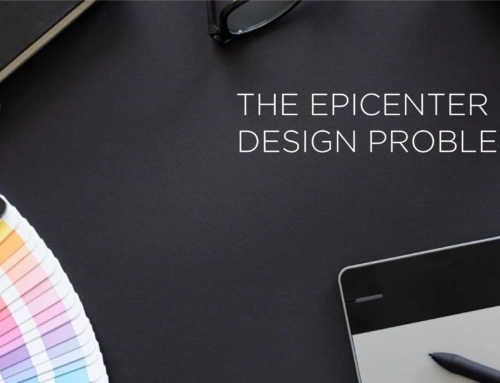Artificial intelligence (AI) is changing many industries, including eCommerce, healthcare, and agriculture. It simplifies processes, boosts effectiveness, and creates new opportunities for creativity.
It involves creating visual content for a variety of mediums, including print media, websites, advertisements, and branding. However, with recent breakthroughs in artificial intelligence (AI), graphic designers have become more worried about their job security. In this essay, we’ll talk about whether AI will replace graphic designers.
Will AI Replace Graphic Designers?
The answer is NO. Ai will not replace graphic designers. However, AI will have an impact on designers as it becomes more involved on a daily basis and it can assist designers with its applications, but it will not replace designers.
For example, AI allows skilled professionals to build prototypes more quickly. Furthermore, it provides options and explains how they could improve the design. As a result, these experts can easily customize and modify their output.
AI’s Impact on Creative Designers
AI serves as a transformative force for creative designers, akin to the mythical attributes of Ravana with his multiple hands. Just as Ravana’s multiple arms symbolize his ability to accomplish numerous tasks simultaneously, AI enhances the efficiency and creativity of designers by automating repetitive and time-consuming processes. Tasks such as initial drafts, data analysis for trend identification, and basic ideation can be streamlined through AI algorithms, freeing up designers’ time to focus on more complex and strategic aspects of their work.
-
Automation & Efficiency
AI-powered tools and software can handle repetitive and time-consuming activities like picture editing, layout creation, and colour matching. As a result, humans have more time to dedicate to jobs that require creativity and innovative thinking.
-
Enhance Creativity
While AI can produce innovative and one-of-a-kind designs, it might not be able to capture the cultural and emotional context that human designers can. AI is not going to take on the role of human creativity in graphic design, I think. Rather, AI may encourage and support creativity among humans.

-
Predictive Insights
Using individual consumer data, AI may more correctly predict client needs and expectations, improving handling and helping to identify developing trends. Creative professionals can create designs that are more likely to capture people by utilizing AI to predict future trends.
-
Collaboration & Co-creation
Collaboration is an important part of the graphic design process, and AI is making it more efficient. Designers can share interactive prototypes with clients and team members, allowing them to provide direct feedback on the design. This speeds up the iteration process and ensures everyone is on the same page.
-
Skill Enhancement
Designers must adapt and learn to work effectively with AI tools. To remain competitive, you first need to understand AI capabilities, then integrate AI into workflows, and constantly update your skills.
However, “Great Power Comes with Great Responsibility”, the integration of AI into creative processes requires careful consideration of ethical implications and a mindful approach to preserving human creativity, empathy, and ethical standards in design. Thus, AI and human designers can synergistically collaborate, leveraging technology to unlock new possibilities and achieve transformative outcomes in the creative field.
Limitations of AI over Human Designers
-
-
-
Understanding the requirements of the client
-
-
Artificial intelligence (AI) can analyze data and produce designs based on predetermined criteria, but it is not able to replace a human designer’s ability to understand all aspects of a client’s brief.
Human designers have the capacity to ask questions, clarify doubts, and find out the true intentions of the client.
-
-
-
Emotional aspect
-
-
Another essential skill is emotional intelligence, particularly for graphic designers who work closely with clients. Artificial intelligence (AI) can analyze data and spot trends, but it cannot feel human emotions or produce emotionally charged designs.

You may use your emotional intelligence and empathy as a human designer to produce designs that leave a lasting effect on the audience.
-
-
-
Focus on the details and improvisation
-
-
A graphic designer must be punctual in their attention to detail and make sure that each component works together smoothly. AI is not able to match human designers’ degree of accuracy and attention to detail.
A graphic designer may generate original ideas to solve issues and improvise their designs, unlike artificial intelligence.
-
-
-
Ideas and Imagination
-
-
When compared to designers, AI’s primary limitation is its lack of ability to produce truly unique and innovative concepts.
Innovative design is still characterized by human characteristics such as originality, sense, and the capacity to think outside of predetermined box.
How can designers get assistance from AI?
Designers can use AI to improve their creativity and efficiency in a variety of activities. AI solutions simplify repetitive tasks like layout design and color picking, allowing designers to focus on more important areas.
Additionally, AI provides inspiration by recommending styles, and analyzing data to identify trends and customer preferences. Designers that use AI into their workflows may speed up processes and open up fresh possibilities for creative and personalized design solutions.
To Sum Up
The use of AI in the rapidly changing field of design raises interesting issues regarding the future of graphic designers. AI is great at increasing productivity and automating some activities, but it cannot replace the human touch, intuition, and subtle creativity that designers bring to their work.
At BRIM, we think about AI as a strong tool that will improve rather than replace our creative process, and we acknowledge its transformational potential in design. BRIM stands out as a dynamic creative agency in Ahmedabad poised to elevate brands through innovative design solutions. Specializing in crafting unique brand identities, captivating visuals, and user-centric experiences, BRIM blends creativity with strategic insights to deliver compelling results.








